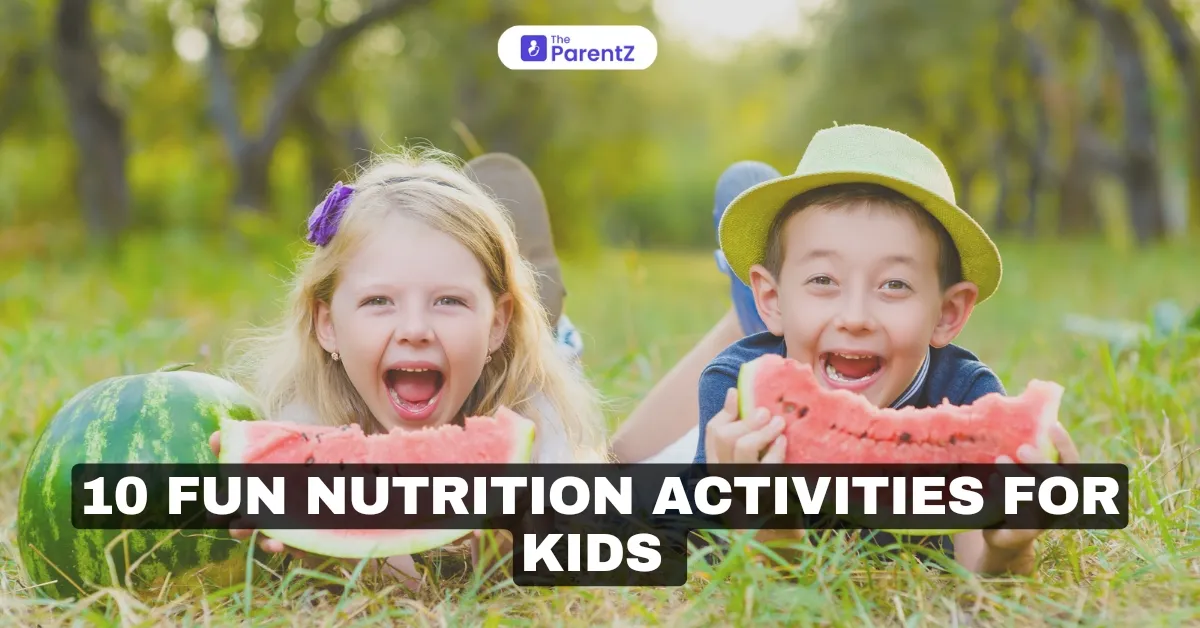Getting kids excited about healthy eating is essential for establishing lifelong nutritious habits. However, with so many distractions and enticing processed snacks, it can be challenging to engage kids in learning about nutrition. That’s where fun, hands-on activities come in! By teaching kids about nutrition in interactive and playful ways, you can help them understand the importance of a balanced diet while enjoying the process. Here are 10 fun activities to teach kids about nutrition that are both educational and entertaining.
10 fun activities to teach kids about nutrition
1. Fruit and Veggie Bingo
Turn learning about fruits and vegetables into a game with Fruit and Veggie Bingo! Create bingo cards with images of different fruits and vegetables. As you call out each food, kids mark them off on their cards. This activity helps familiarize children with various produce items and encourages them to try new ones.
Tips for Success:
• Offer small prizes for filling a row or the entire board.
• Include unique fruits and veggies to make it interesting and expose kids to diverse options.
2. MyPlate Meal Planner
Introduce kids to MyPlate, the USDA’s visual guide for a balanced diet, by letting them create their own plates. Provide paper plates, markers, and magazine clippings of various foods. Encourage them to draw or cut out food items and arrange them according to MyPlate sections: fruits, vegetables, grains, proteins, and dairy.
Learning Goals:
• Understand portion sizes and food group balance.
• Learn about food diversity and which foods belong in each category.
3. Edible Art: Fruit and Veggie Faces
Let kids get creative with fruits and vegetables by making edible art. Provide an assortment of sliced fruits and veggies, and encourage kids to assemble them into fun faces or creatures.
Benefits:
• Promotes creativity and makes healthy foods exciting.
• Encourages children to try new foods by incorporating them into a fun activity.
4. DIY Smoothie Challenge
Hold a smoothie-making competition where kids choose from a variety of healthy ingredients to create their own blends. Offer fruits, vegetables, yogurt, and plant-based milk as options, and let them experiment with flavors and textures.
Why This Works:
• Gives kids the freedom to explore healthy options and make nutritious choices.
• Allows them to try different combinations, which can help expand their tastes.
5. Grocery Store Scavenger Hunt
Take kids to the grocery store for a nutrition-themed scavenger hunt. Prepare a list of healthy foods, such as whole grains, lean proteins, and colorful fruits and vegetables. Encourage kids to find these items and even ask questions about their nutritional benefits.
Teaching Points:
• Helps kids identify nutritious foods in a real-world setting.
• Instills an understanding of grocery shopping for healthy choices.
6. Plant a Kitchen Garden
Growing herbs, tomatoes, or other easy plants in a kitchen garden is a great way to teach kids about where food comes from. Start with simple seeds in small pots and show them how to care for the plants.
Skills Learned:
• Responsibility and patience.
• Appreciation for the effort involved in growing food, making them more likely to eat it.
7. Sugar Detective Activity
Show kids how to be “sugar detectives” by examining food labels. Provide common packaged snacks, and teach them how to spot added sugars on nutrition labels. You can also explain the effects of too much sugar on their health.
Impact:
• Teaches label reading and awareness of hidden sugars.
• Encourages healthier snack choices.
8. Rainbow Plate Challenge
Challenge kids to create a “rainbow plate” by including foods of various colors at each meal. Set a goal to see how many colors they can incorporate each day, explaining how different colors represent different nutrients.
Why It’s Fun and Educational:
• Introduces the concept of “eating the rainbow” for a balanced diet.
• Encourages kids to include diverse fruits and vegetables on their plates.
9. The Portion Control Game
Teach portion control with hands-on visuals. Use different household items (like a tennis ball for a serving of fruit, or a deck of cards for protein) to illustrate portion sizes, helping kids visualize how much they should eat of each food group.
Objective:
• Helps children understand portions without counting calories.
• Instills the importance of balance in eating.
10. Taste Test Adventure
Set up a taste-testing station with a variety of foods that range in taste, texture, and color. Let kids sample new fruits, vegetables, whole grains, and proteins, encouraging them to talk about what they like or dislike.
Learning Takeaway:
• Expands kids’ palates and willingness to try new foods.
• Introduces a variety of textures and flavors in a pressure-free setting.
Conclusion
Teaching kids about nutrition doesn’t have to be complicated or boring. By incorporating fun, interactive activities like those above, you can engage them in healthy eating habits from a young age. These activities not only educate but also encourage kids to make mindful, nutritious choices on their own. So, gather your ingredients, supplies, and a big dose of enthusiasm—let the healthy fun begin!








Be the first one to comment on this story.